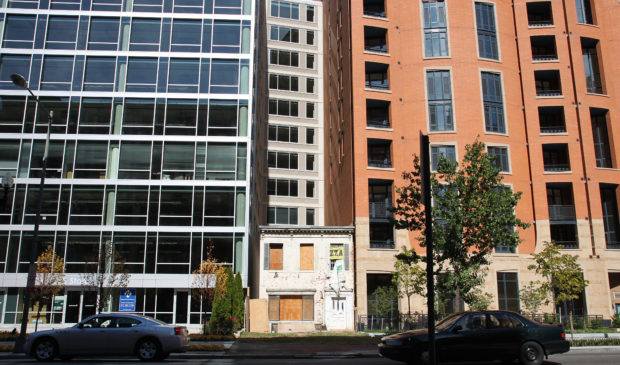Council digests CodeNEXT compatibility standards
Thursday, June 8, 2017 by
Jack Craver City Council members don’t know quite what to make of the new design and compatibility standards offered in the current draft of CodeNEXT, the proposed overhaul of the city’s Land Development Code.
During a Council work session Wednesday, a number of Council members voiced confusion and concern about whether the new code would allow tall buildings to tower over single-family homes and whether it would incentivize the construction of larger, more expensive homes in a neighborhood otherwise traditionally composed of small houses.
John Miki, one of the consultants who drafted CodeNEXT, explained that the proposed code does not include a strict limit on floor-to-area ratio within the new, form-based transect zones that will cover much of the city. Instead, the size of the construction will be limited by the overall “building envelope,” which describes the overall dimensions into which a building must fit.
Existing limits on impervious cover, designed to prevent flooding, will also remain in place.
A significant change included in the draft code relates to how “compatibility standards” are triggered. Under the current code, height restrictions are, in part, based on a property’s proximity to a single-family home. As a result, explained Miki, property owners face a great deal of uncertainty about what they will be able to build on their land. If a parcel that was previously zoned for commercial use is turned into a single-family home, all of a sudden the surrounding properties are subject to strict height restrictions.
Under the proposed code, compatibility standards would instead be based on the zones in which the property is located.
The size of nearby homes was not the top concern voiced by residents he had talked to, said Miki. Instead, he said, they were concerned about “how does that building look from the street, how deep into the lot it gets,” a claim that Council Member Alison Alter pushed back on.
“That’s not the concern I’m hearing,” said Alter. “The concern I’m hearing is whether they can afford to live in Austin.”
In a separate exchange, Miki and fellow consultant Peter Park conceded that the new approach could lead to demolitions of small homes in neighborhoods that currently have small lots and strict size restrictions in favor of larger, more expensive homes.
“The bigger the houses are, the less affordable they’re going to be,” Alter replied. “If what we want to incentivize is the creation of even larger houses that are going to cost more, it seems like what you’re suggesting leans in that direction.”
Miki cautioned that a code that allows larger houses wouldn’t necessarily lead to larger homes being built, a fact that Alter acknowledged but said did not assuage her concerns that the new code might encourage more expensive housing.
“I still don’t feel like I have an answer for people,” she said.
Mayor Pro Tem Kathie Tovo similarly told the Austin Monitor that she was having a hard time understanding what the proposed changes implied for residents of her Central Austin district, specifically as it relates to the differences in compatibility standards between transect and non-transect zones.
“I’m not even in a place where I could explain to a constituent how they’re different,” she said.
Tovo told her colleagues that she wants the next revision of the proposed code to include tools aimed at preserving existing housing stock. In addition to being an outspoken proponent of preserving historic homes, Tovo has also argued that the frequent demolitions play a role in driving up housing prices throughout the city.
Mayor Steve Adler emphasized the opportunity to further calibrate the proposed code through input from citizens and the city’s land use commissions and issued yet another call to “roll up our sleeves” and collaborate to make the code as strong as possible.
Photo by Mr.TinDC made available through a Creative Commons license.
The Austin Monitor’s work is made possible by donations from the community. Though our reporting covers donors from time to time, we are careful to keep business and editorial efforts separate while maintaining transparency. A complete list of donors is available here, and our code of ethics is explained here.
You're a community leader
And we’re honored you look to us for serious, in-depth news. You know a strong community needs local and dedicated watchdog reporting. We’re here for you and that won’t change. Now will you take the powerful next step and support our nonprofit news organization?









